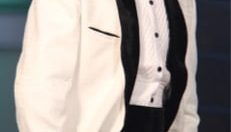So what does this job involve? What kind of person would do well in this career? What kind of skills are required to do the job effectively and what is a typical day like in this career? These are some of the questions we’ll endeavor to answer.
What Are Some of the Things a Person Does in this Job?
Data scientists collect and analyze large amounts of data for a given enterprise or business to troubleshoot various problems. They can also use this data to boost productivity and make general improvements in other areas of the business.
The massive amounts of data some large businesses can accumulate are sometimes referred to as “big data.” The two types of data that most often make up big data are structured data and unstructured data. To keep it brief, structured data involves the hard numbers like website traffic and raw statistics about product use. Unstructured data, which is the fastest growing form of data, involves less concrete information such as social media posts, customer reviews, and email.
A company usually employs IT personnel to handle the structured data that a computer can more easily process. The job of the data scientist is to analyze and act upon information given largely by the unstructured data available.
While there are IT aspects to this work, it often involves a more business-oriented brain-storming focus. It isn’t just about the organization of data but finding creative ways to make that data useful.
What Kind of Individual Would Enjoy and Thrive in this Career?
People that thrive on problem-solving using numbers and statistics will do well in this career. Having the patience to deal with some repetition in the workplace is important. This is a job for those that enjoy working indoors and sitting at a computer rather than being outside on their feet. An individual that would do well in this type of job is one that enjoys working with new technology and feels at home working with complex software.
What Kind of Skills are Required for the Job?
A firm grasp on mathematics and statistics is essential. An understanding of business is imperative when working in applicable jobs. The best data scientists also have the creativity and logical reasoning capacity to use data in new and unexpected ways to improve business operations and solve problems.
An innate ability to use technology effectively and an aptitude for learning new programs quickly are also important skills to have. Good programming knowledge is a must in order to manipulate programs effectively and create tools to deal with unique situations.
Lastly, data scientists need to have good communication skills to help others within the company understand their analysis of the data and be able to demonstrate how to effectively use this information. They have to work well as part of a team and have the humility to accept constructive feedback from their fellow co-workers.
What a Typical Day on the Job is Like
Most people will spend their days as part of a team working together to solve problems and achieve the goals of the company they work for. But some people, such as Terry Bandy, are self-employed. He reports that his typical day involves working from his home office mining data and reporting his results to clients or preparing presentations. Terry Bandy is able to manage his own home business while maintaining a balance between family and his work.
Those that work at a corporate office and report to a manager would experience a similar workload, but with specific variations dependant on the products and goals of the business, they work for. Knowing the goals and expectations of the business is essential in creating solutions that match the company’s vision.
Why This Type of Work is Important
As technology advances, the ability to access vast amounts of data in a short period of time has become readily accessible. Having a person dedicated to the analysis of all this big data and actively finding methods to use it in ways that improve company procedure is invaluable for many different types of businesses.
This career is needed everywhere data is an important component of success. Companies that market directly to consumers, businesses that sell to other companies, and organizations that process big data for research purposes can all benefit from the employ of data scientists. As technology makes it easier and cheaper to store and process large amounts of information the role of the data scientist will only continue to grow with time.









